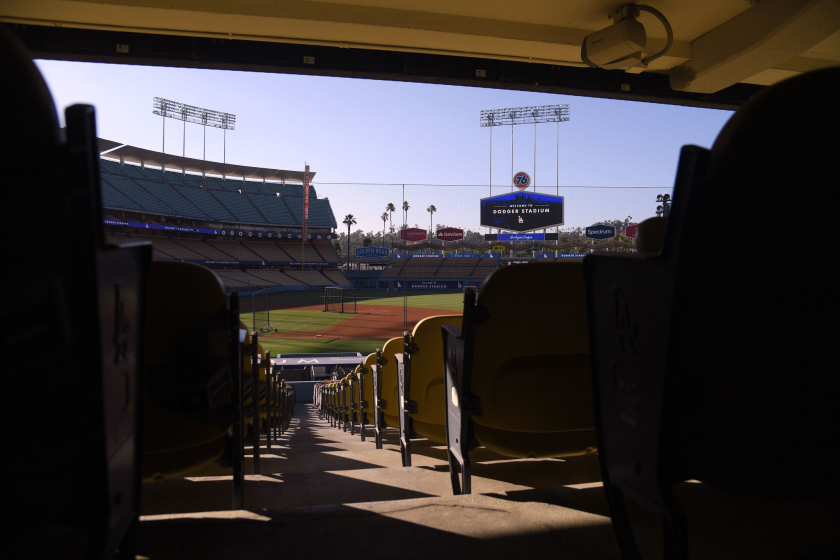Slope in ‘Precarious Position’ : Three-Way Dispute Develops Over Slides
- Share via
Two years have passed since a crumbling hillside first sent huge boulders crashing down on Palisades Drive, the only highway to Palisades Highlands, yet the city of Los Angeles, the state and the developer remain at odds over how to prevent another landslide.
The state Department of Parks and Recreation, the city Bureau of Engineering and the developer, Headland Properties Inc., also disagree on how to divide the cost of protecting Palisades Drive from the unstable hillside.
“We know that slope is in a very precarious position,” said George Stolt, an engineering geologist for the city Bureau of Engineering. “We . . . just want the street cleaned up.
‘Everybody Pointing the Finger’
“It’s a poker game. Everybody is pointing the finger at somebody else, and nobody is willing to accept responsibility.”
City engineers have warned that another landslide just south of the community on Palisades Drive could injure motorists and damage cars. There are no homes in the path of the slide.
The slide area is riddled with landslides, fractured and sheared rock and fault zones, said Syd Willard, a state geologist who inspected the site this year. Boulders cling to the slope above the road, which runs along Topanga State Park. At the bottom of the slope, a cracked 50-yard stretch of graffiti-covered concrete wall holds back dirt and rocks, some of which appear ready to topple into the southbound lanes.
Boulders six feet in diameter, dirt and hundreds of rocks surged across Palisades Drive in August, 1983, and again in March, 1984. No one was harmed, but a falling rock damaged one car.
Hyman Haves, chairman of the homeowners associations in the Palisades Highlands, said residents want something done to ease the landslide threat before the onset of another rainy season. “We’re going to have very dangerous . . . problems,” he said.
If Palisades Drive were blocked, the community’s 3,300 residents would be forced to rely on a two-lane emergency road, which is now closed to traffic by a locked gate, Haves said.
The city, state and developer are involved because each owns a portion of the affected property. The city owns the road, the developer owns the property from the road extending 75 feet up the slope, and the state owns the land on top, where aerial photographs reveal a significant fissure.
In an Aug. 1 report to the state Department of Parks and Recreation, Stolt and city engineer John Fitton said slide movement is certain whenever annual rainfall nears 30 inches in the area. Rainfall has exceeded that amount three times in the past nine years, according to precipitation records at the Santa Ynez Canyon Reservoir.
State and city engineers met July 9 but the state appeared to object to every city recommendation, installation of metal culverts a drainage system, Stolt and Fitton said in their report. Stolt later called the meeting a “fiasco.”
Willard, the state geologist, said the state is preparing recommendations to stabilize the hillside. Those recommendations may include planting new vegetation, installing a drainage system and removing earth behind the cement barrier, she said.
F. C. Buchter, legal counsel for the state Department of Parks and Recreation, said the city report was “overly sympathetic to the developer,” and did not reflect the official city position.
‘There’s a Squabble’
“I don’t think there’s a squabble between the state and the city,” Buchter said. “There’s definitely a squabble between the developer and the state.
“The position of the developer is that the state should fix the slide that threatens and occasionally blocks the road. The state’s position is, ‘Why the hell should we?’ ”
Buchter contended that Headland Properties Inc. entered state property without permission after the first slide on Aug. 10, 1983, “completely denuded the slope and hauled dirt away.” The work exposed the hillside to soaking and increased the chances of another slide, he said.
The developer received emergency permission from the city to remove debris on Palisades Drive but did not receive permission to enter state land, Willard said. Headland also received permission from the Coastal Commission to “trim back” the slope and remove loose rocks from the slope and roadway.
W. Charles Chastain, president of Headland Properties, acknowledged that his crews entered state property but said they did so under emergency conditions to prevent further danger to motorists and pedestrians on the highway below. Headland Properties later informed the state of the grading and removal of about 35,000 cubic yards of debris, Willard said.
Chastain asserted that the slides originated at the fissure on top of the hill, which is on state land. Headland Properties also has filed suit against the state in Los Angeles Superior Court asking for reimbursement of at least $350,000 the company spent removing debris, Chastain said.
Although the state is monitoring the hillside weekly for landslide activity, the state and city engineers did not know whether they could reduce the slide danger this year. State and city geologists said they have not estimated the cost of stabilizing the hillside.
More to Read
Sign up for Essential California
The most important California stories and recommendations in your inbox every morning.
You may occasionally receive promotional content from the Los Angeles Times.













